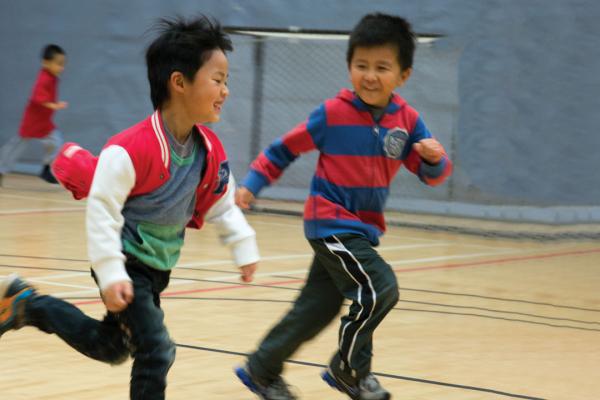Physical literacy is at the heart of all our recreation programs–especially for children
Being able to catch, jump, run, swim or throw are just a few examples of physical literacy in action. Skills like these are the building blocks for children to build a strong foundation to confidently participate in an increasing variety of activities as they grow.
Many of our activities and programs support the development of physical literacy and encourage healthy, active lifestyles–and it’s never too late to start! Here's a sample of what we offer for every age and ability:
Pre-school
Preschool sports and games introduce children to fundamental movement skills: locomotor body movements that involve travelling from one point to another–like running, leaping and sliding; and non-locomotor body movements that don’t involve travel–like stretching and twisting.
School-age (6-12)
Children's basketball is one example of a sport that develops fundamental movement skills like running, leaping, stretching and twisting; and social skills like teamwork and conflict resolution.
Youth (age 13-18)
Open gym allows teenagers to improve their physical literacy skills in a non-competitive environment. It helps build their confidence and self-esteem and encourages healthy hobbies.
Adults
Try adult swim to build your skills in the water or a drop-in sport like badminton, tennis, basketball or pickleball. The social, health and fitness benefits are worth it!
Seniors (55+)
Seniors yoga supports your balance and flexibility, keeping you mobile as you age.
Accessible
Our programs offer opportunities for differently abled children and adults to develop their physical and social skills in a friendly, encouraging environment.
